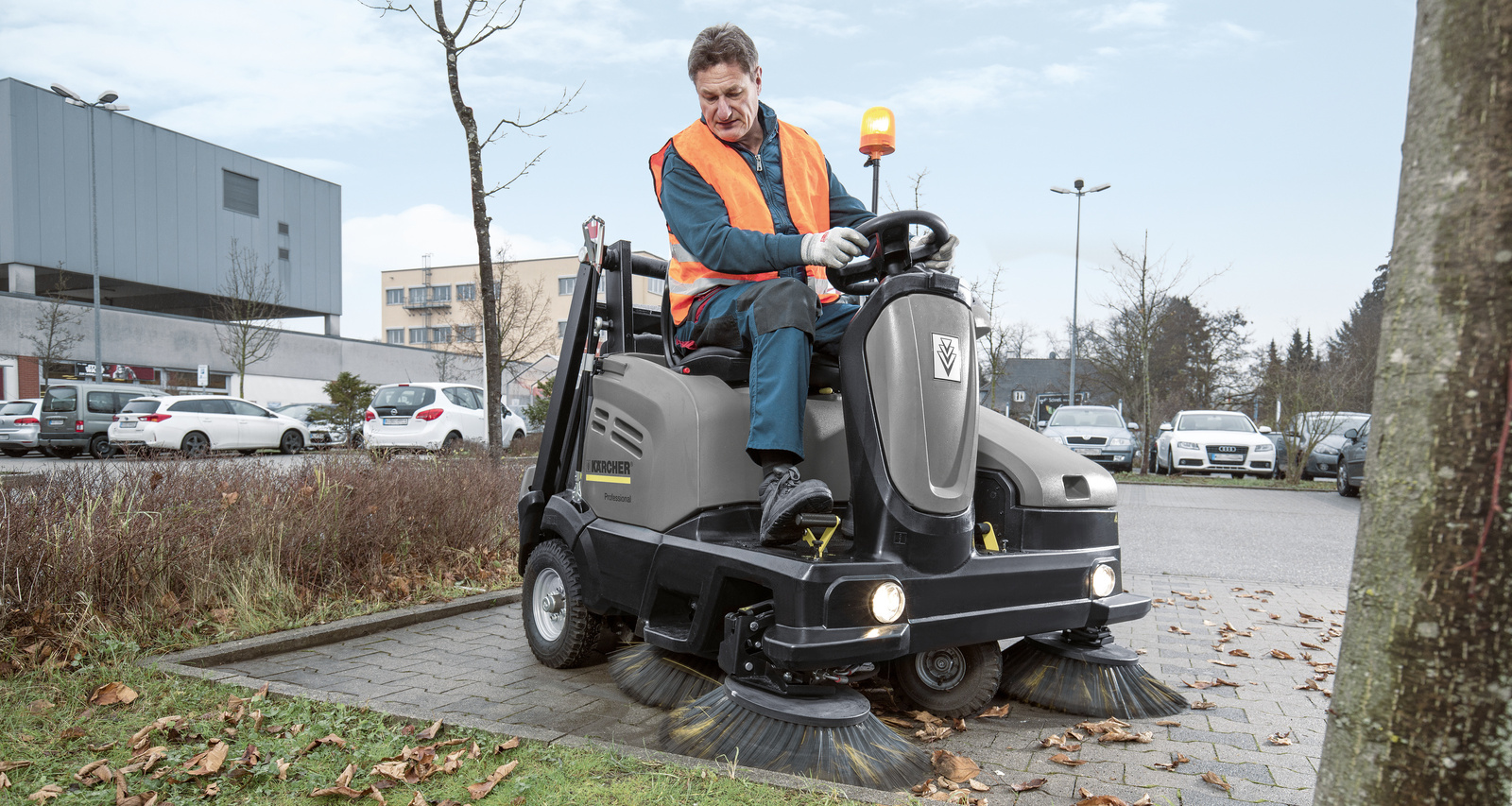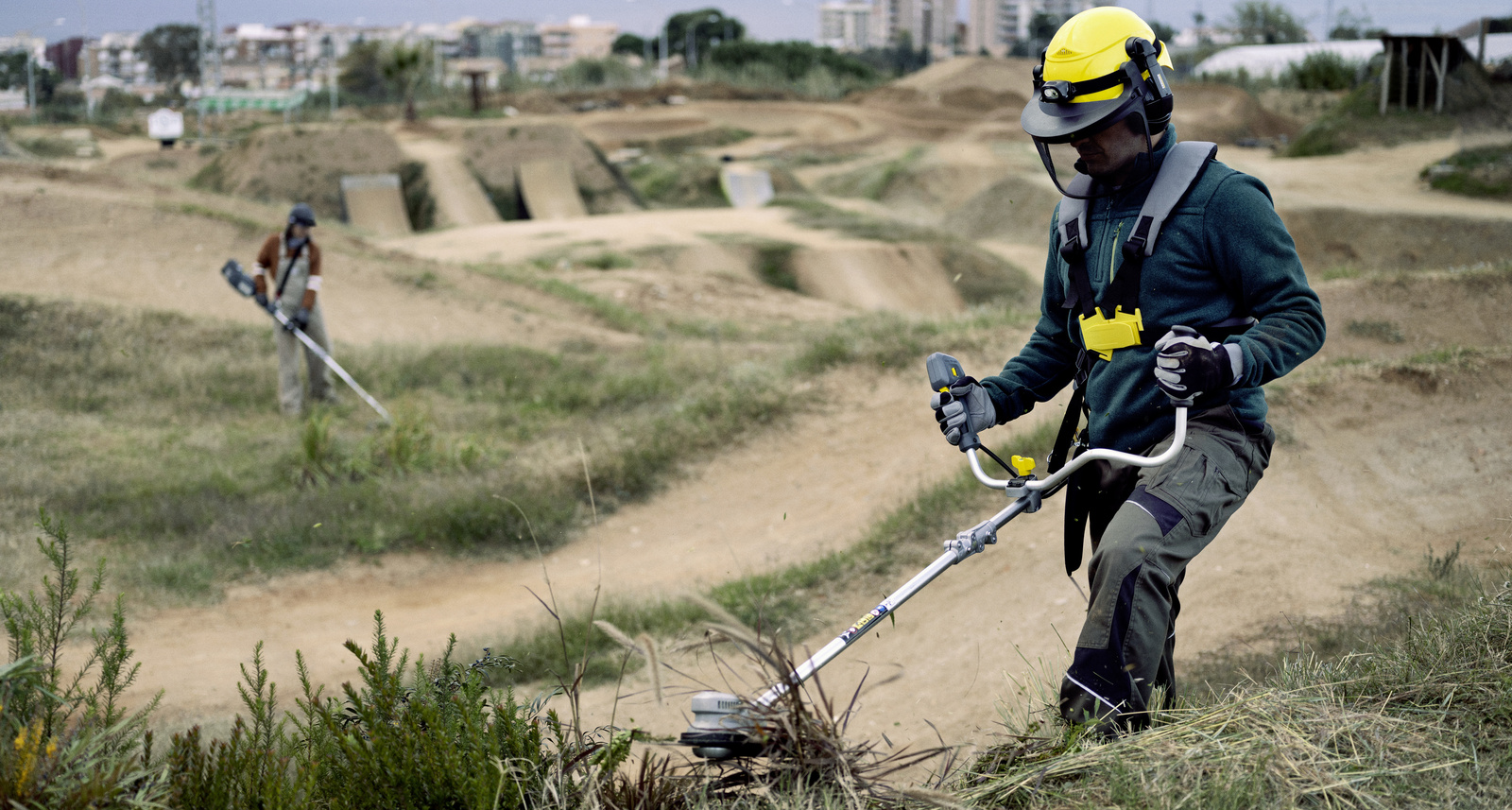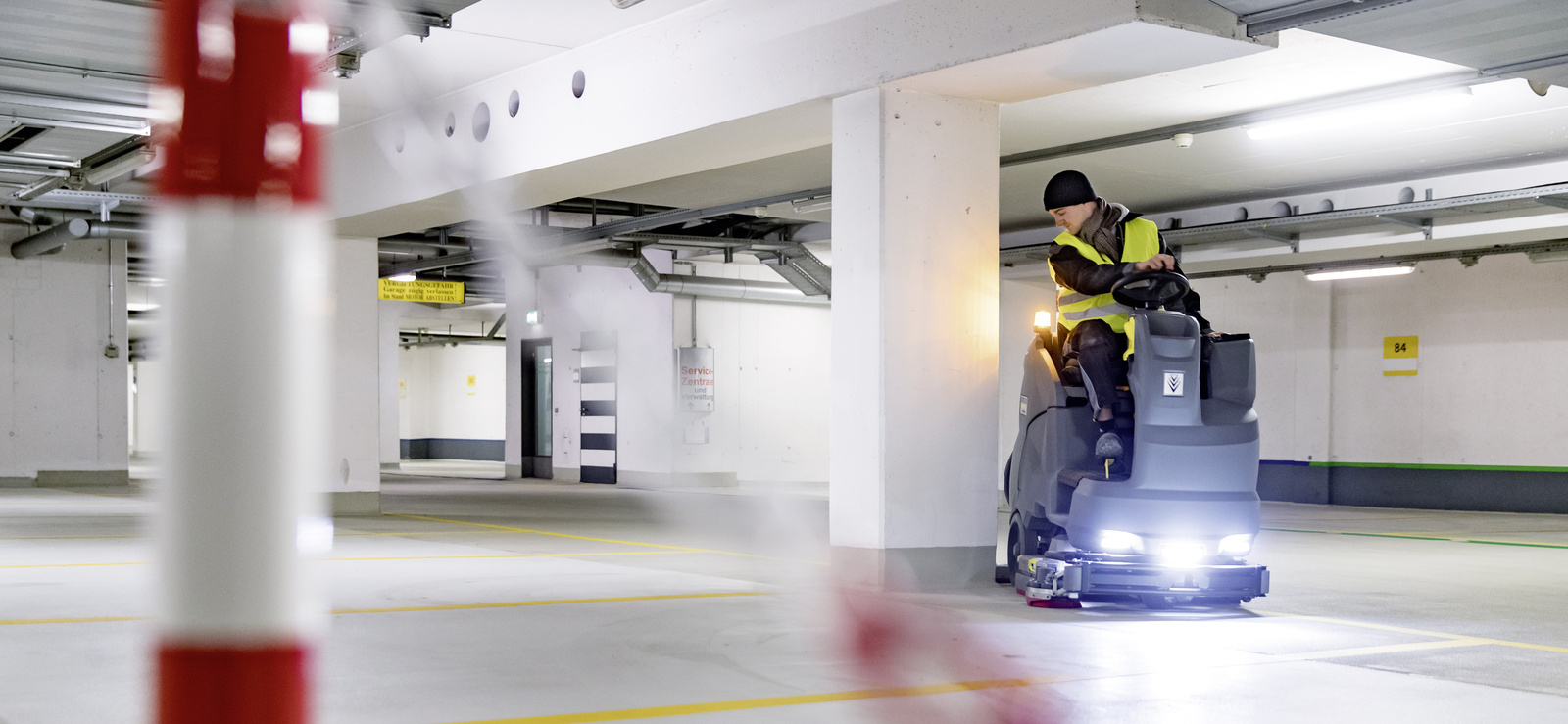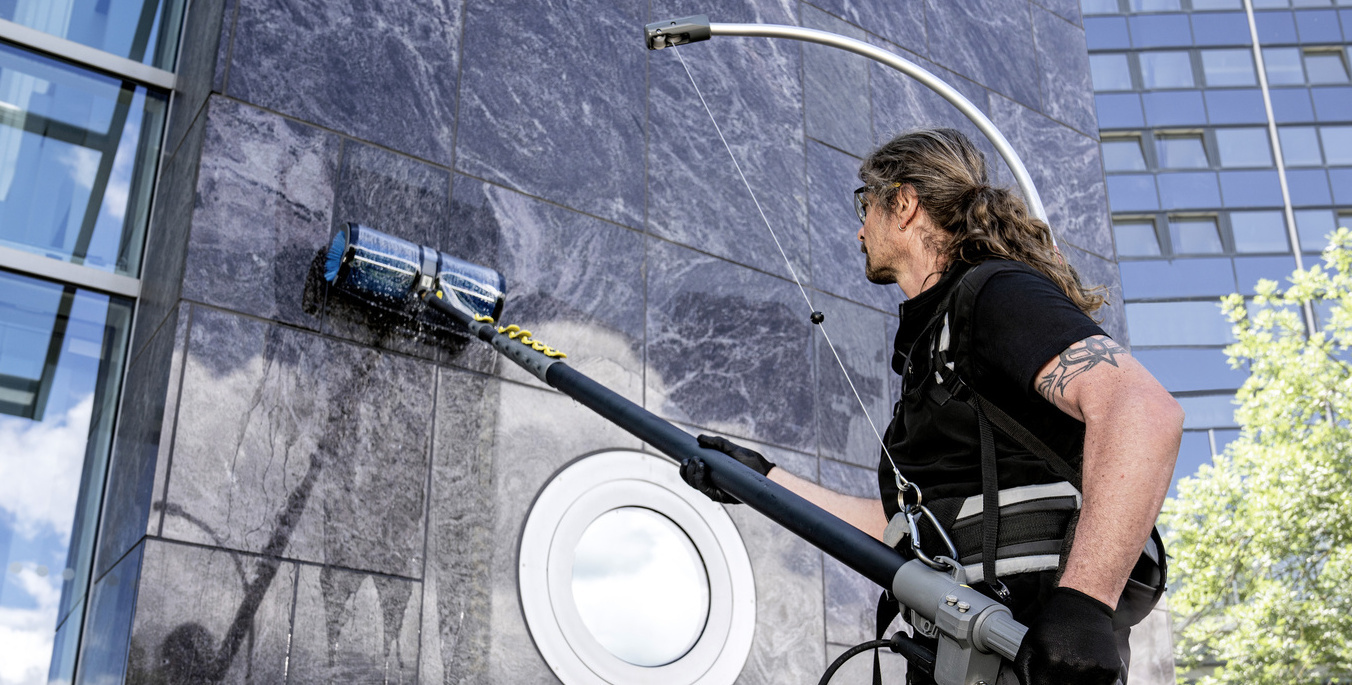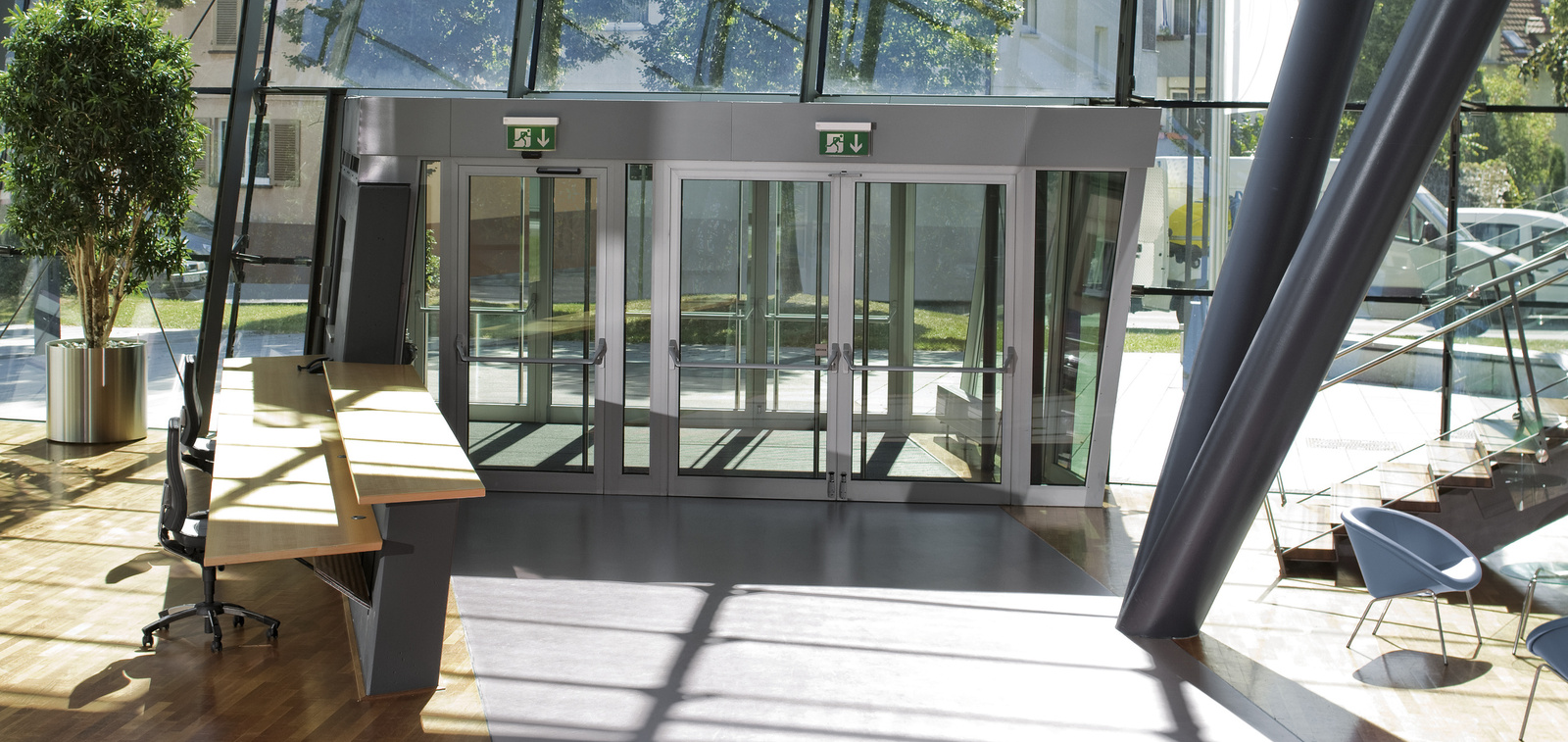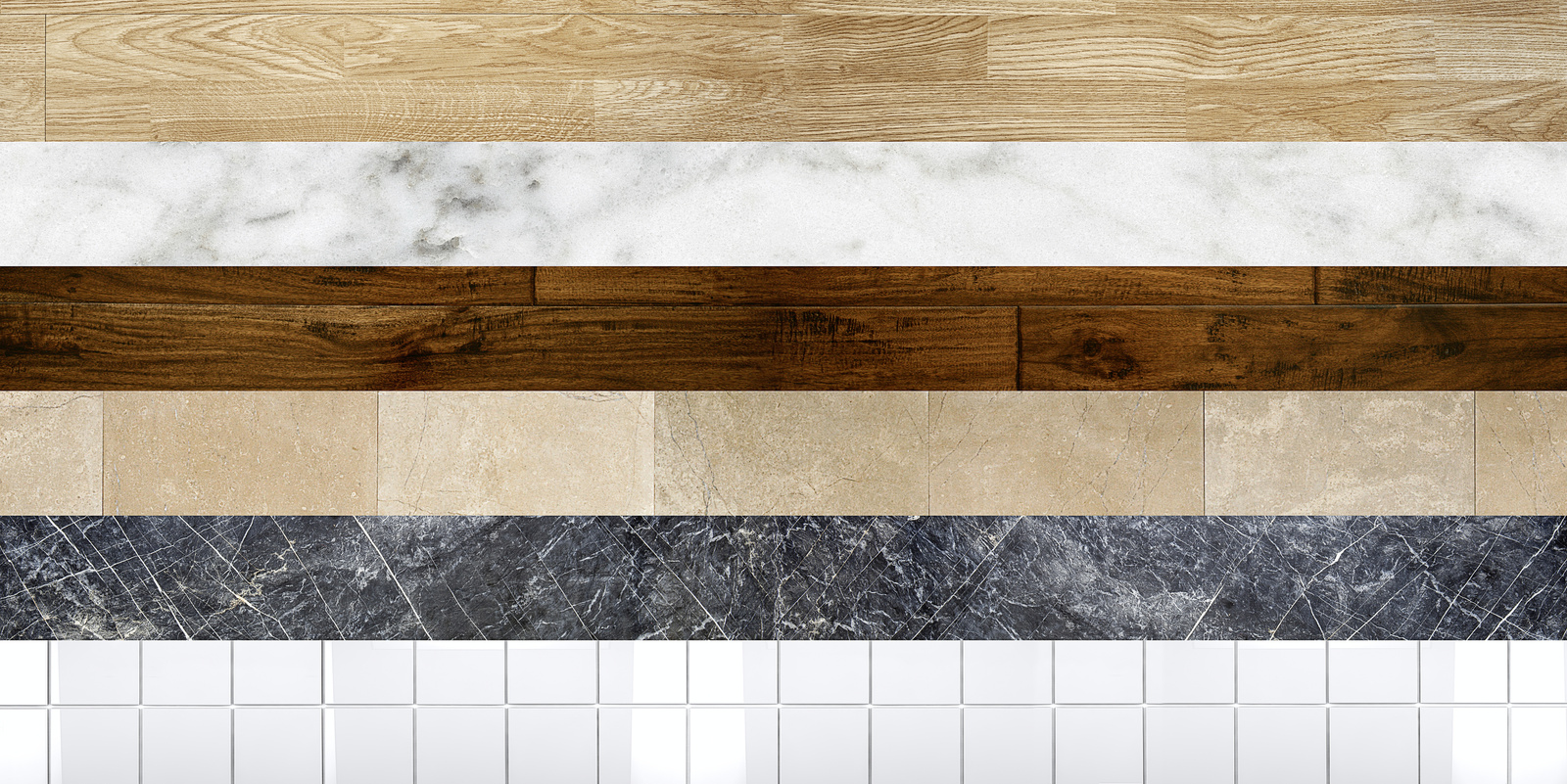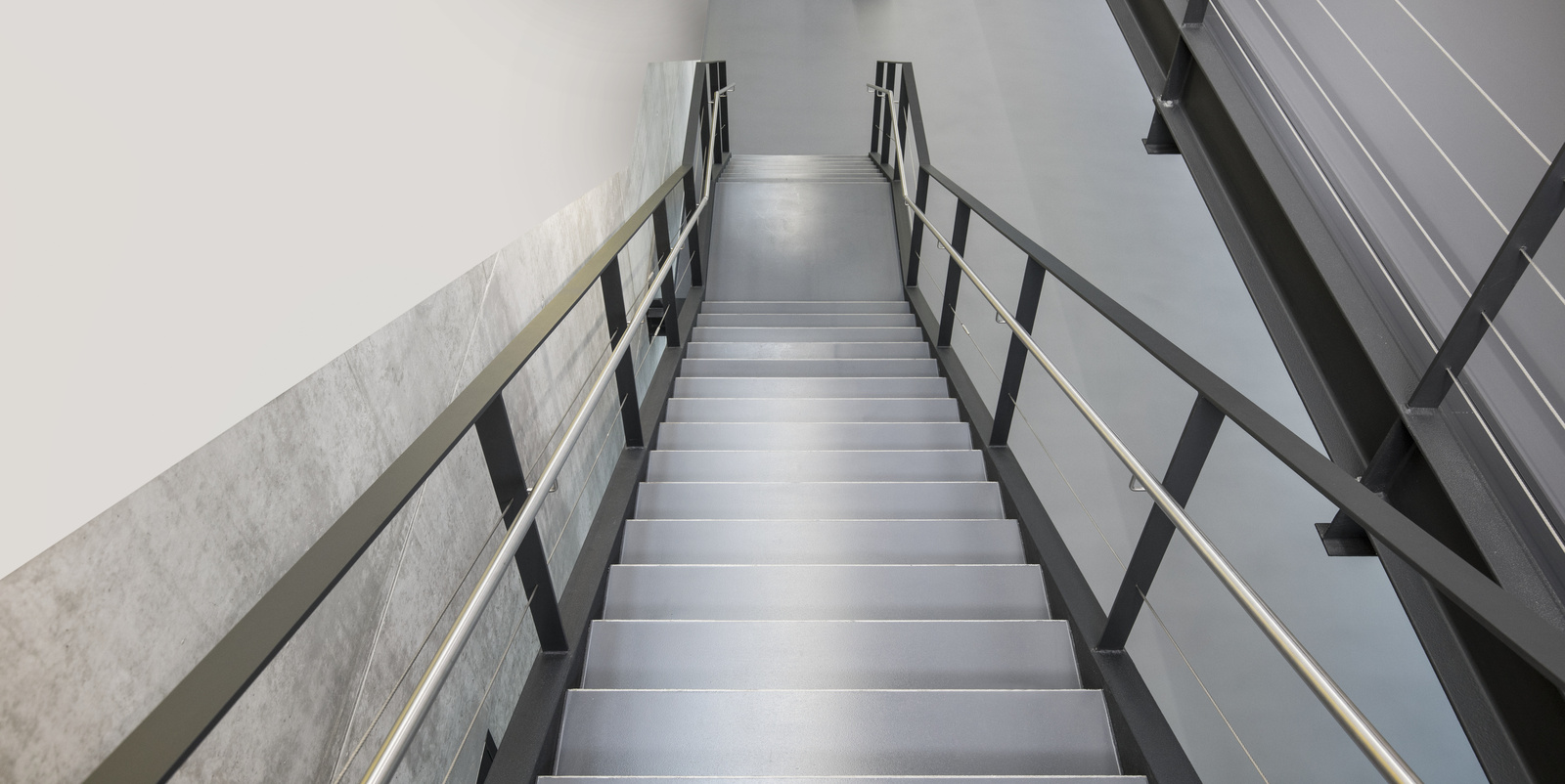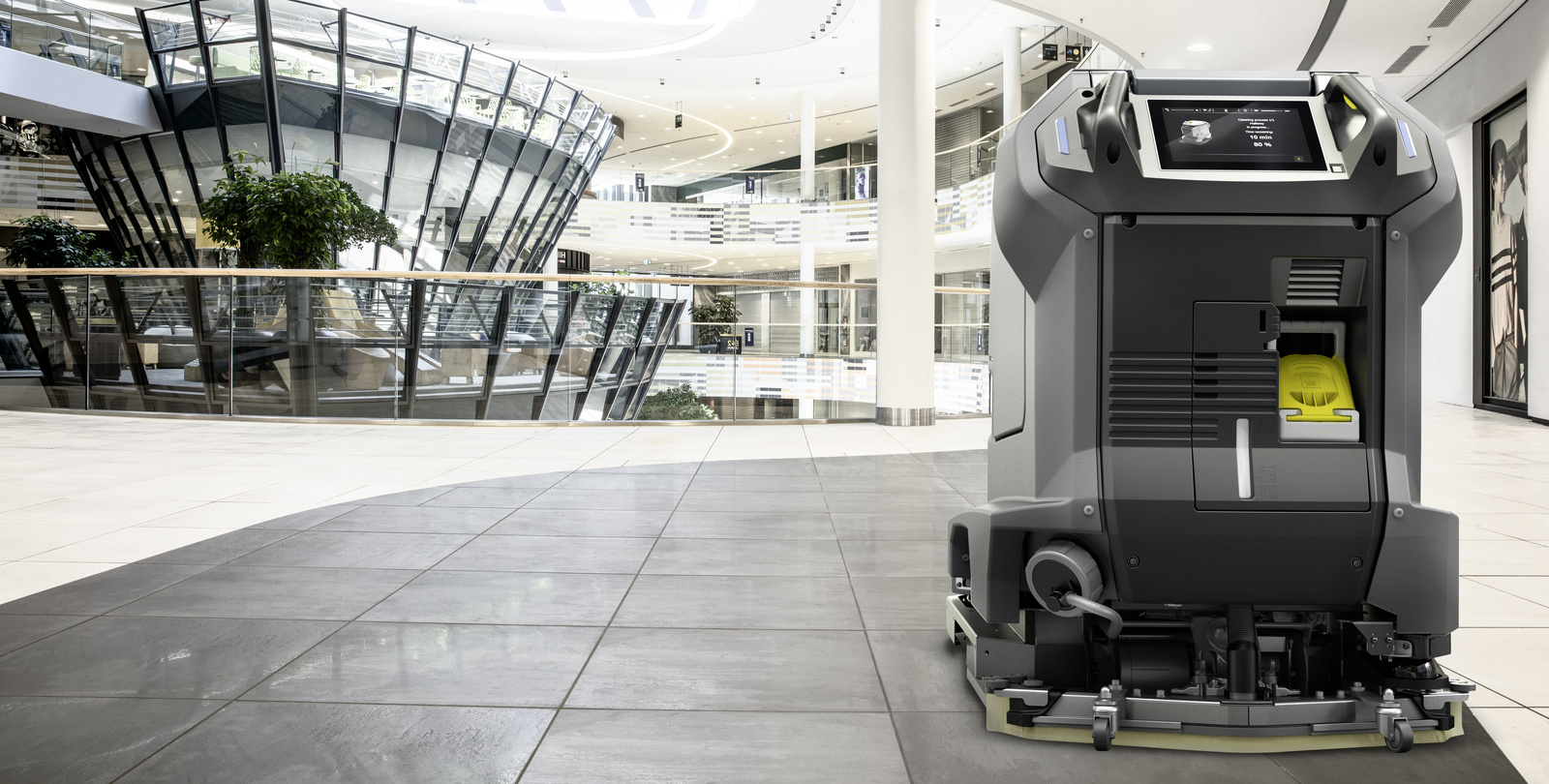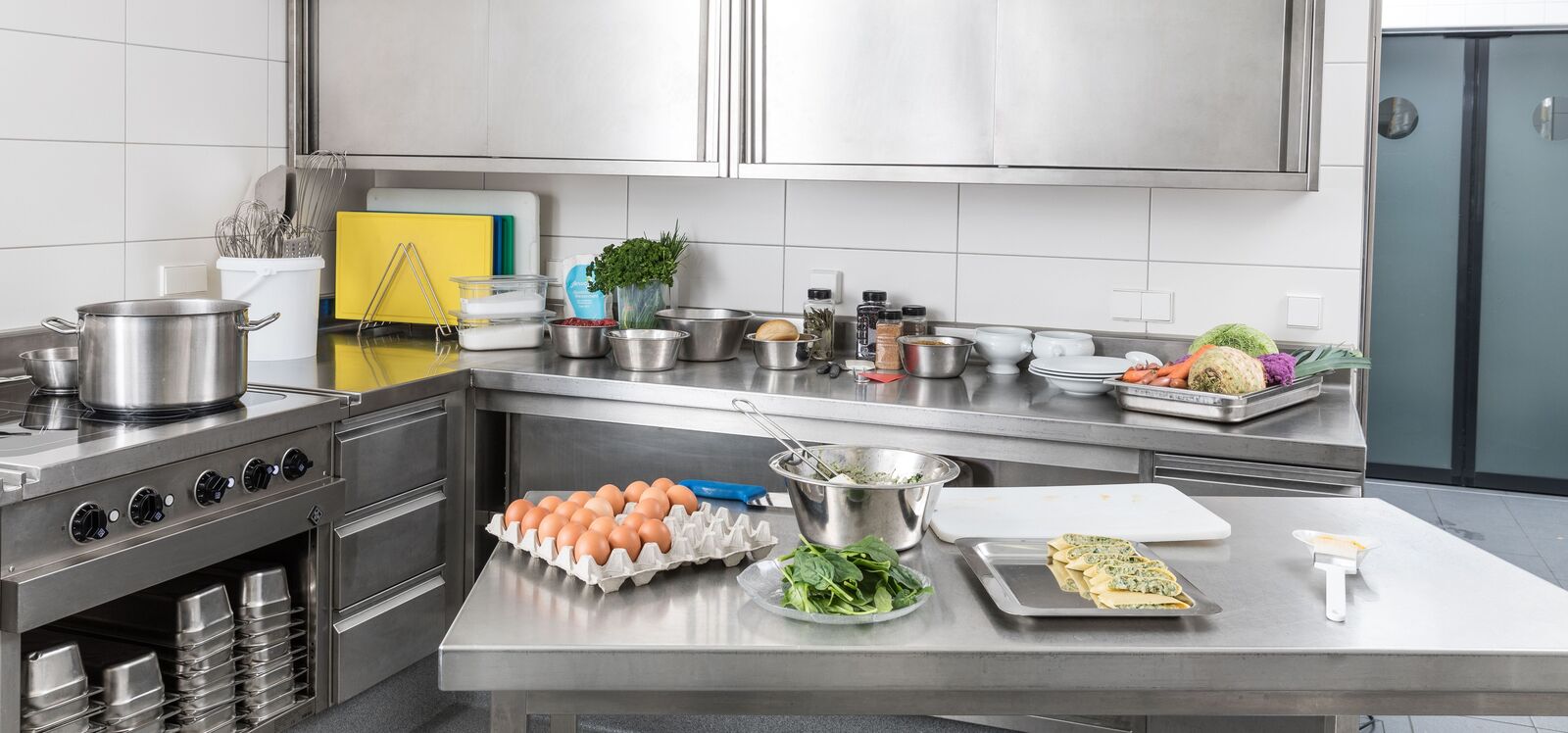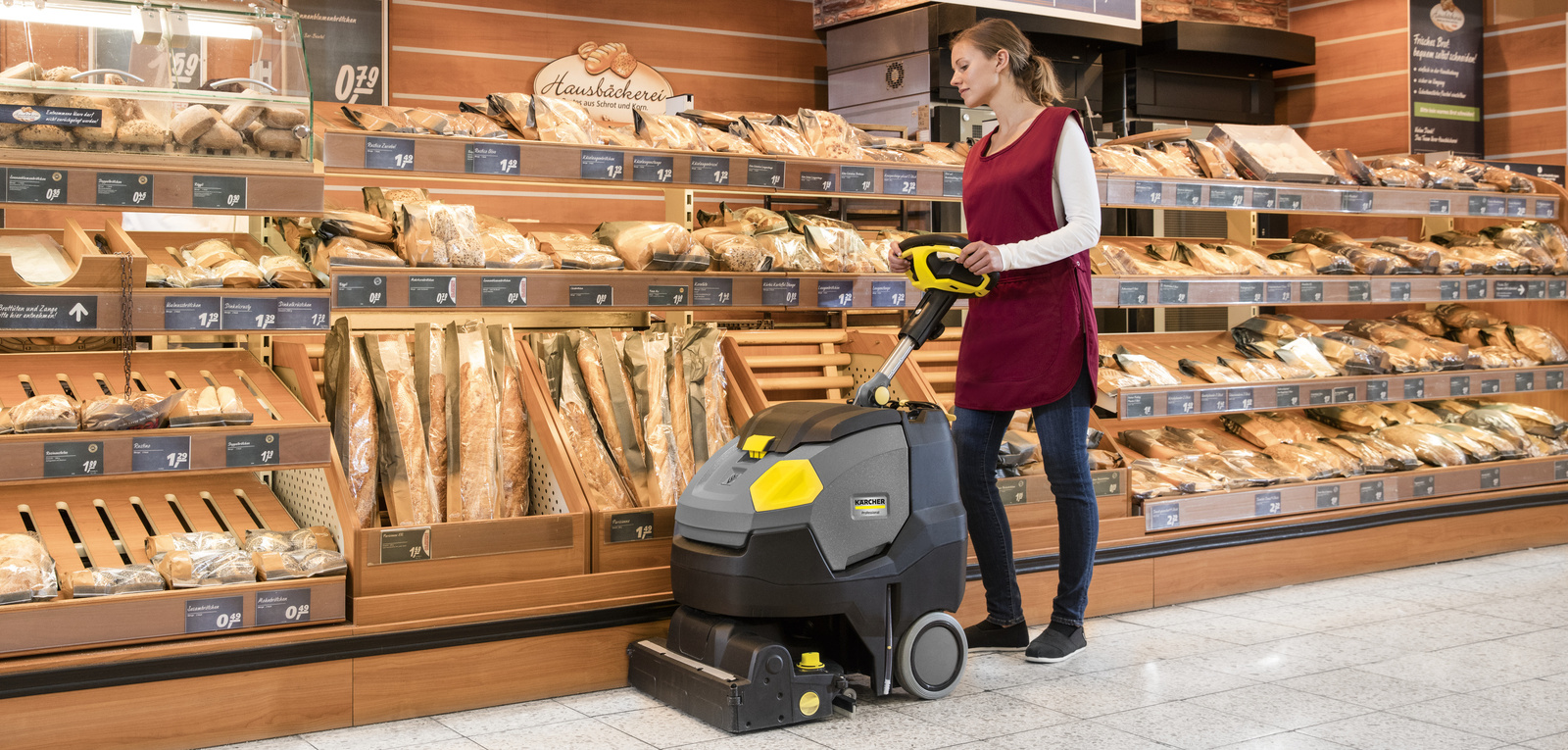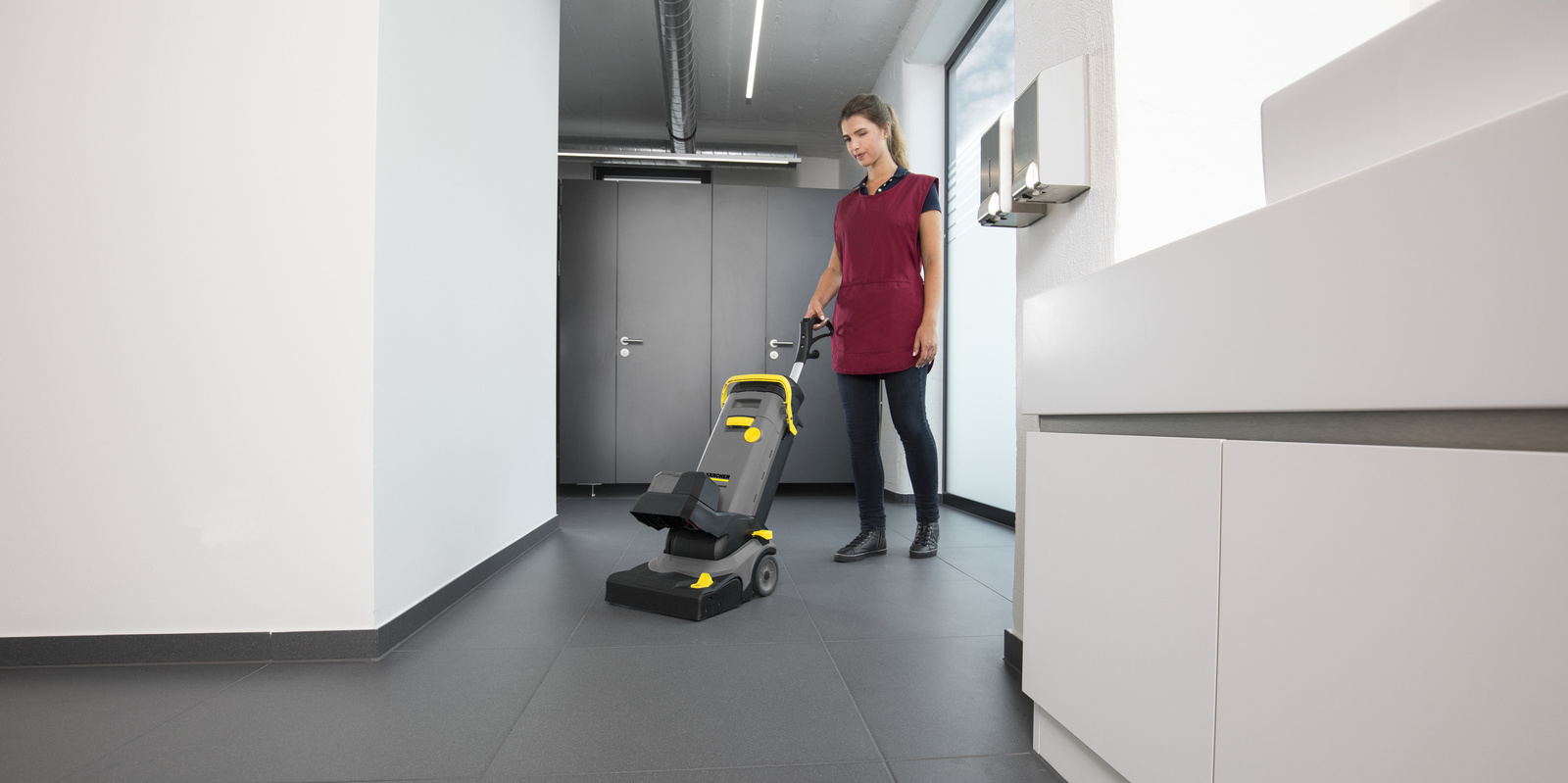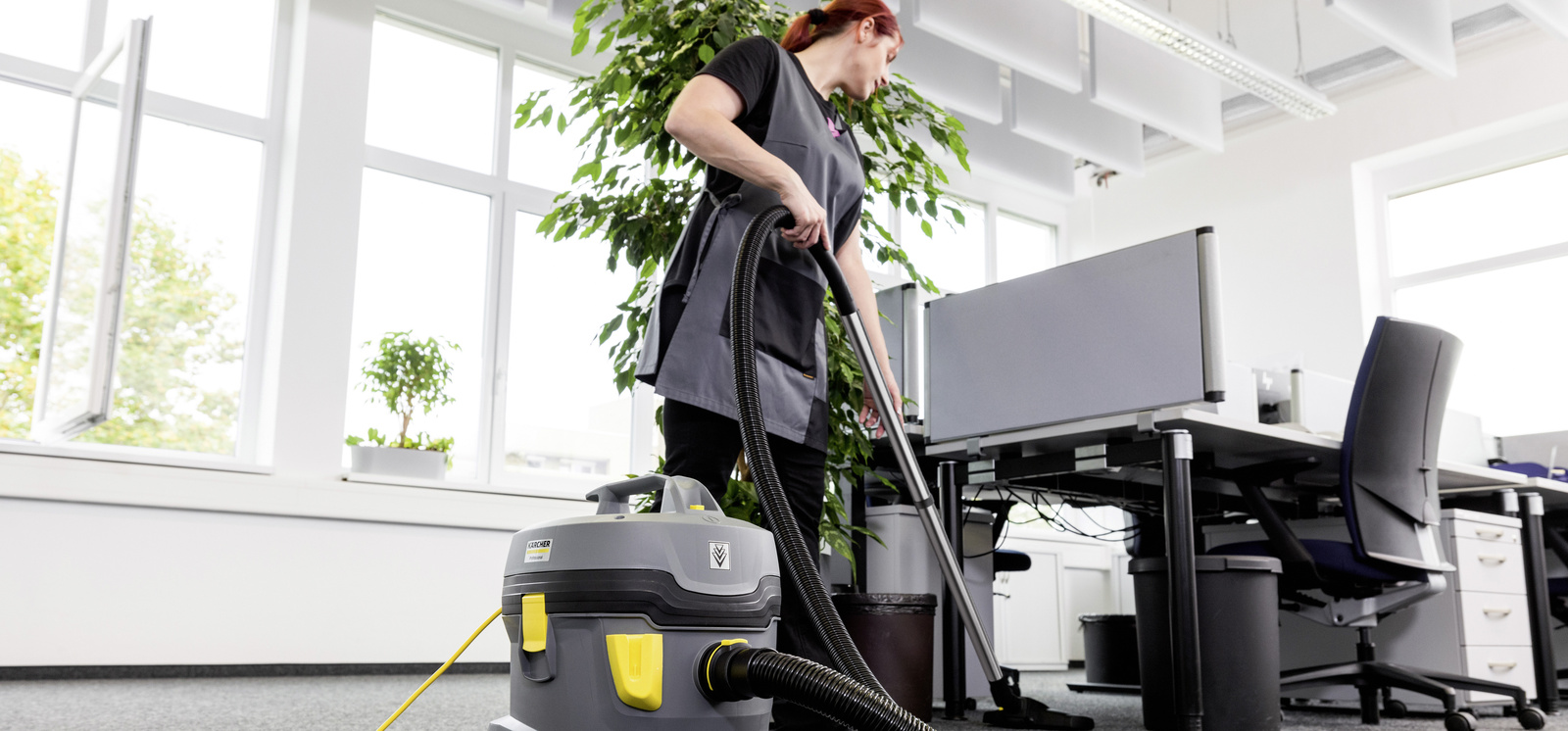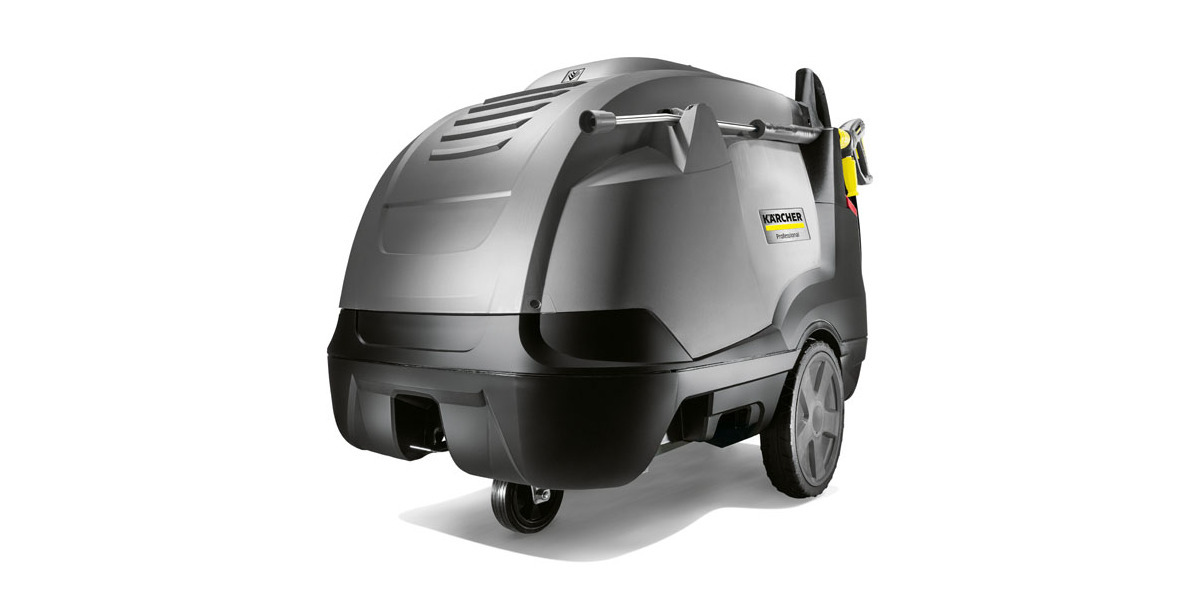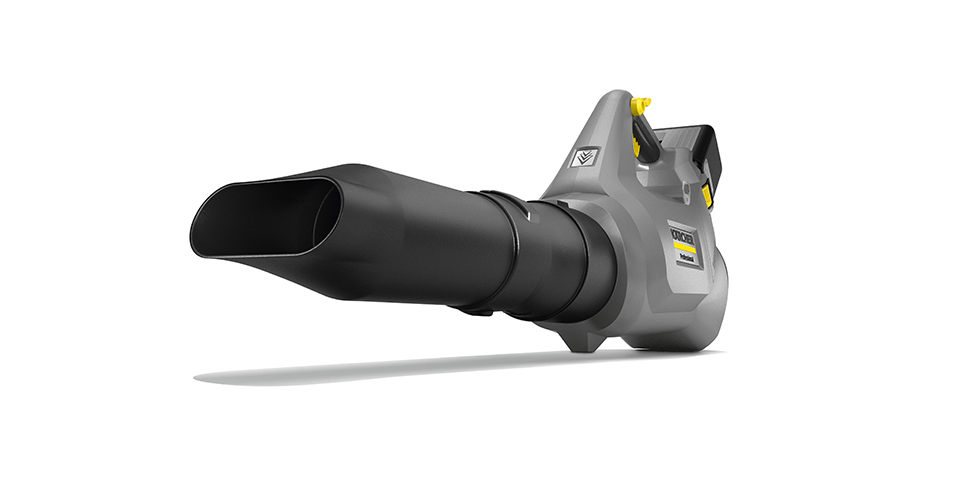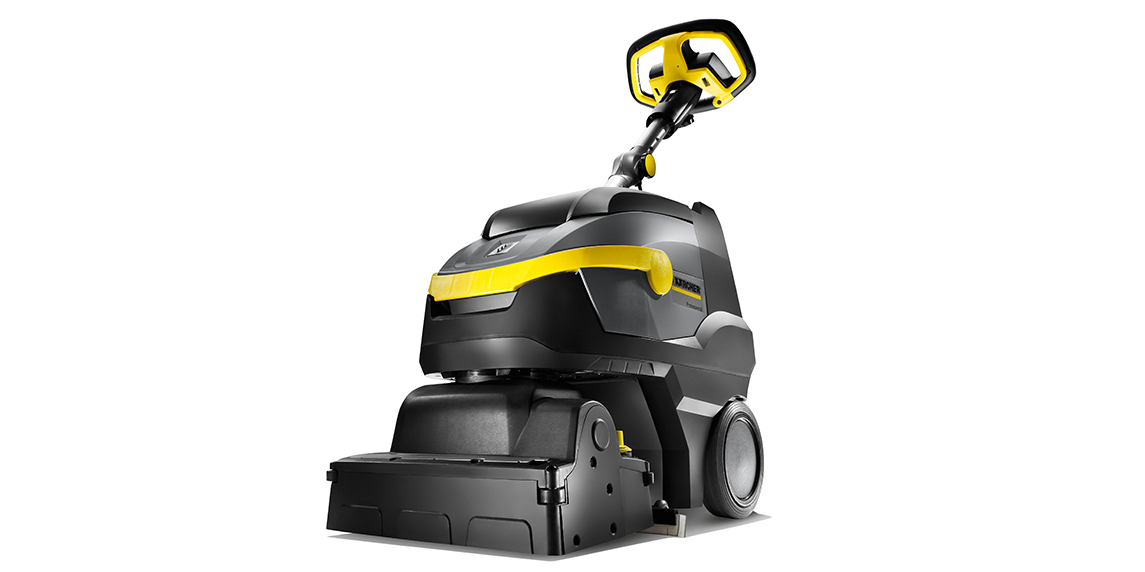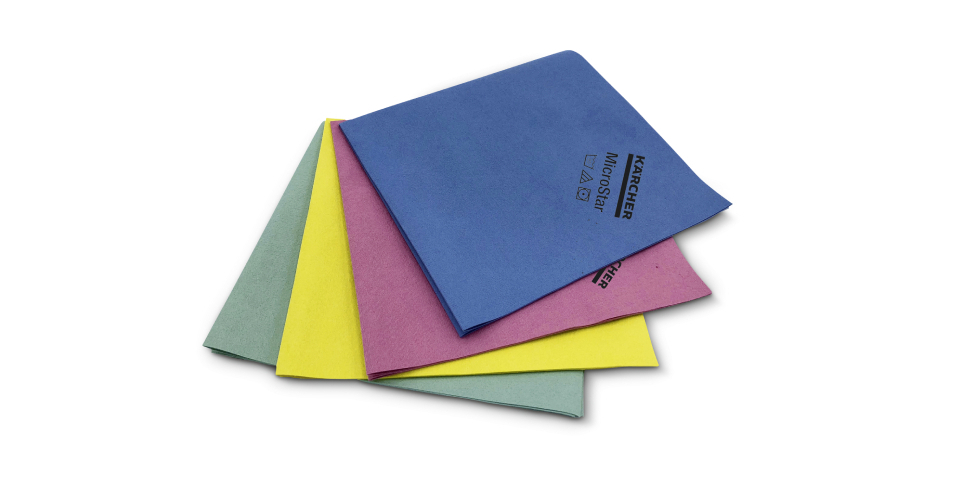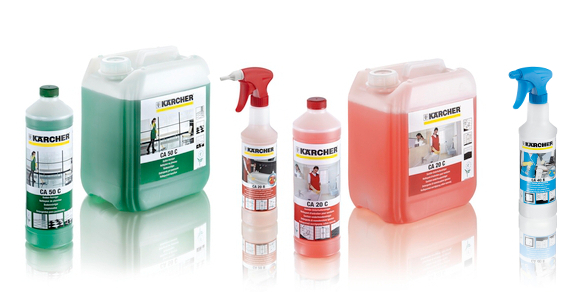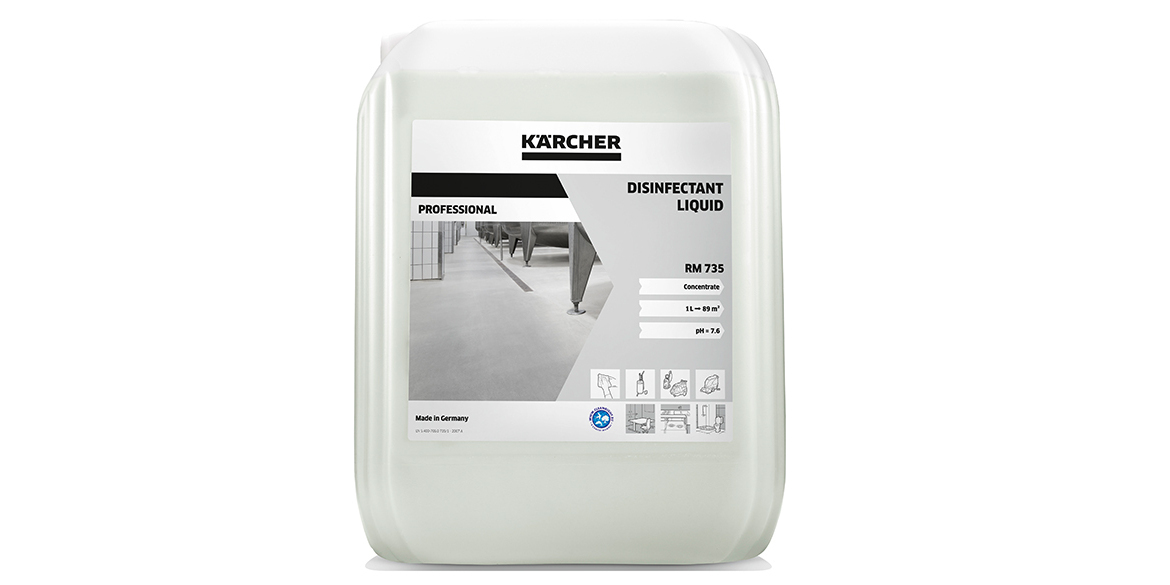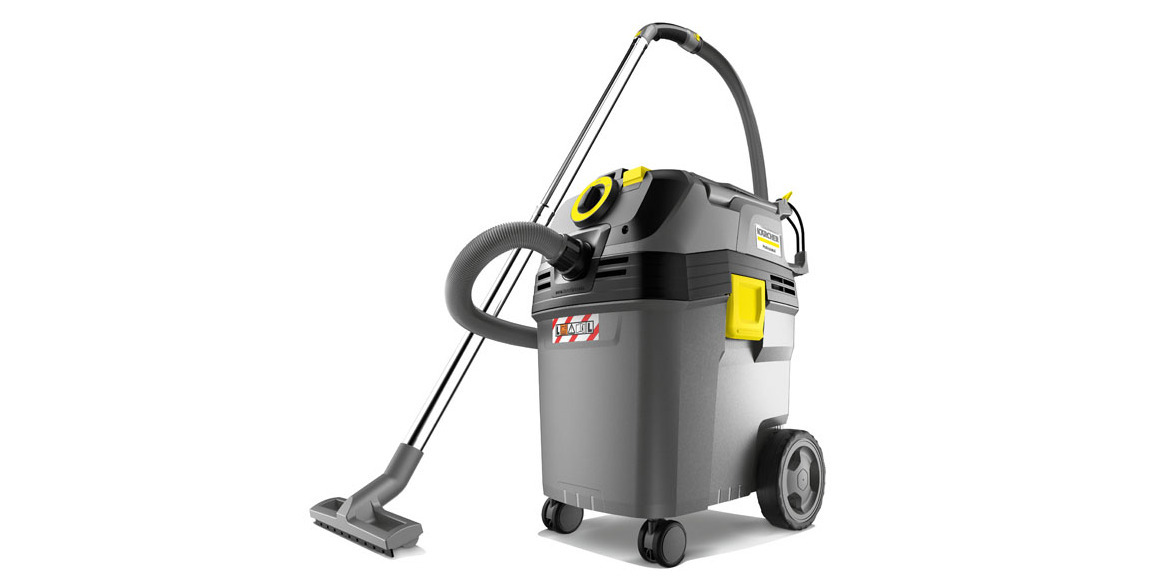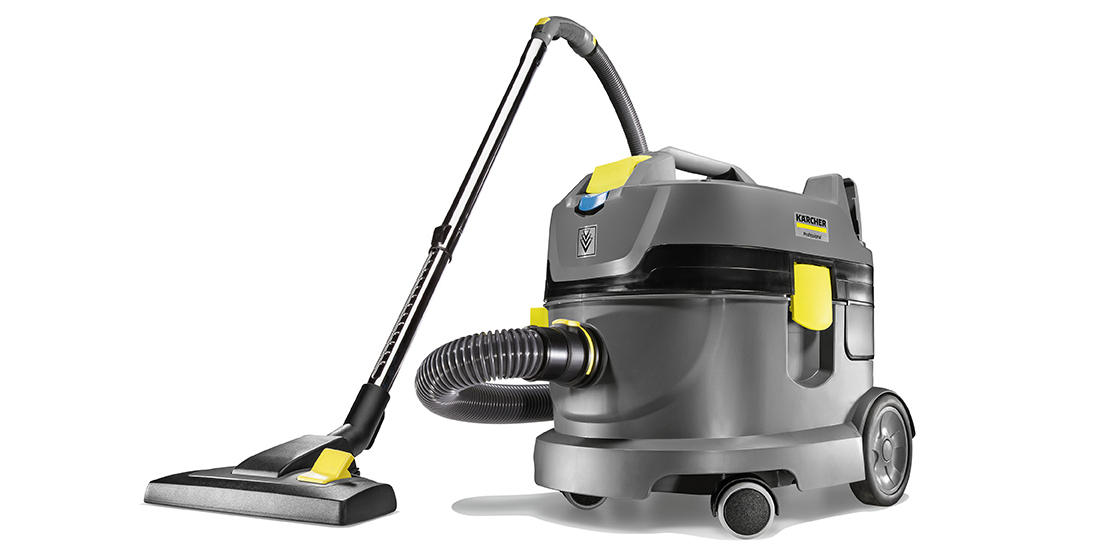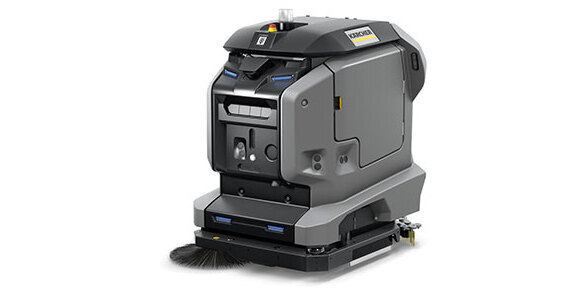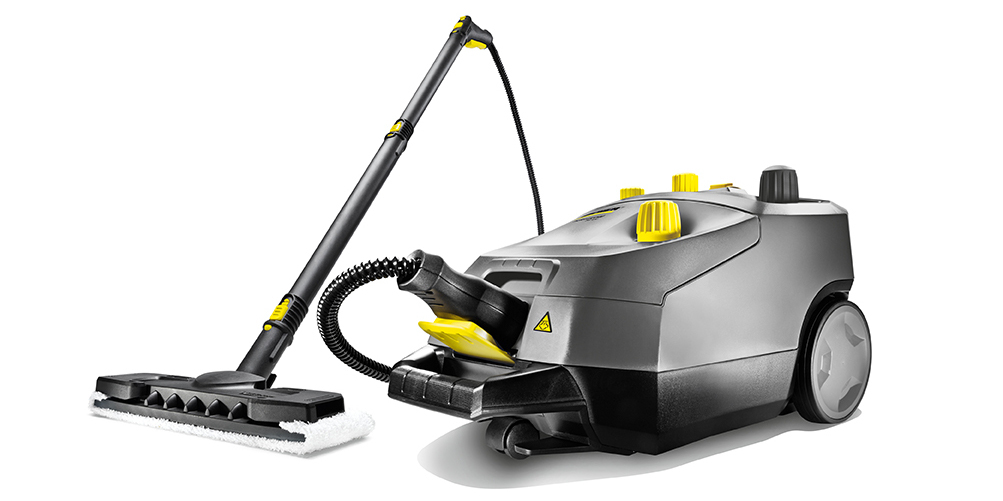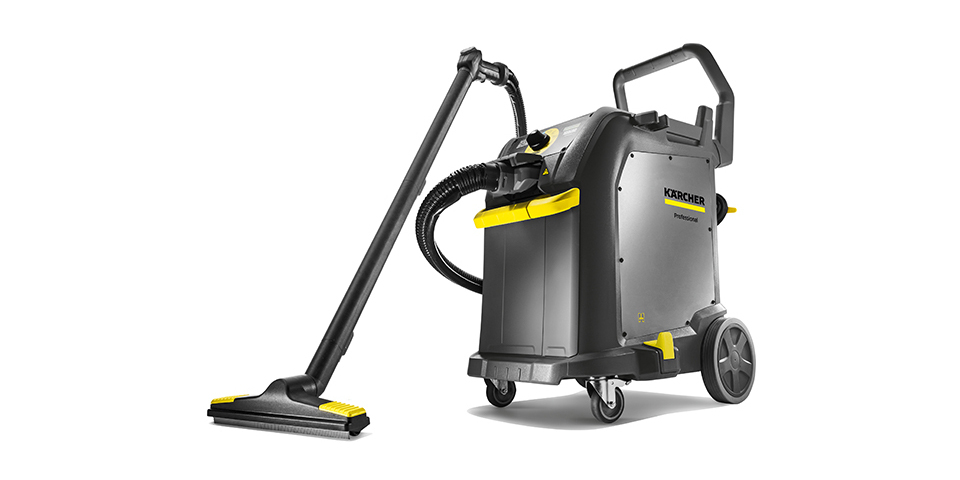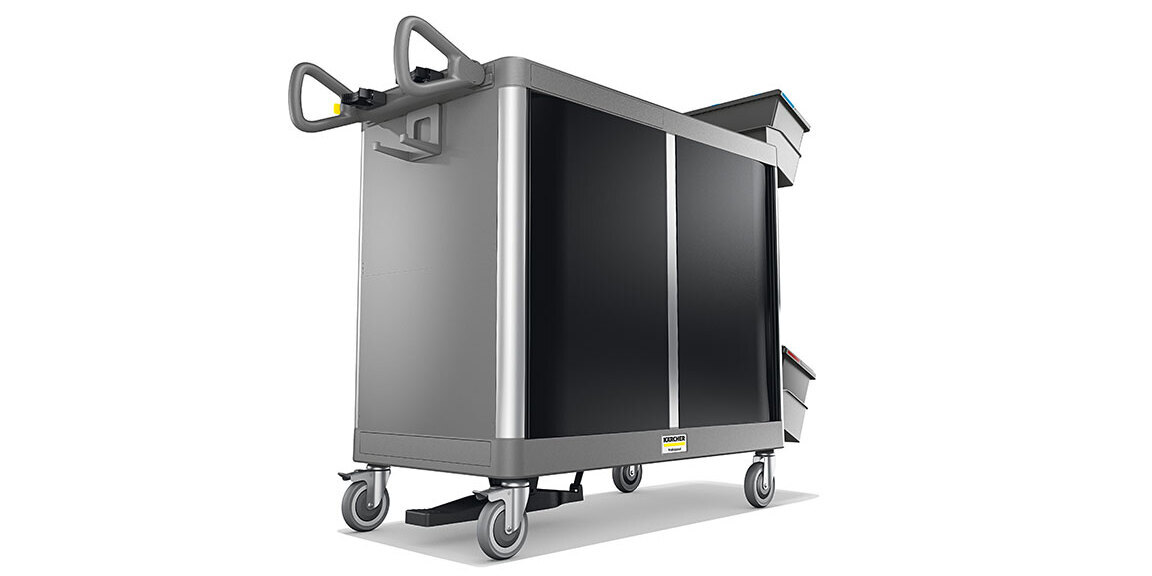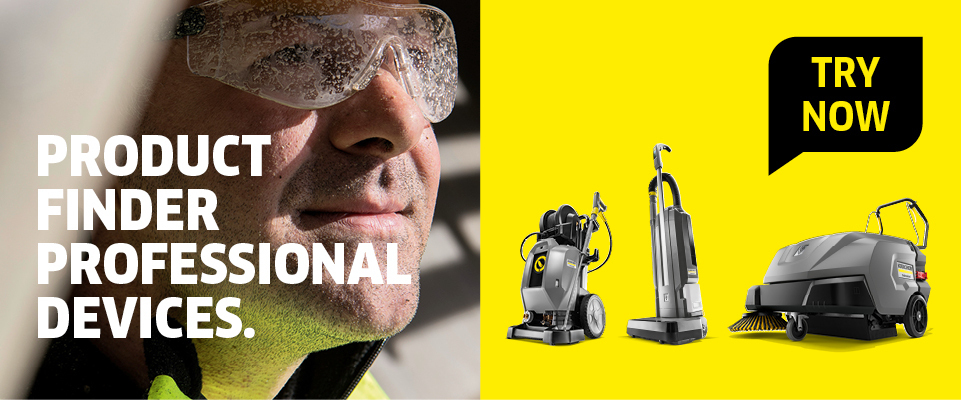Cleaning in hospitals
In hospitals, cleaning is essential to create a clean and safe environment for patients and visitors. Cleanliness forms the very basis of hygiene, since dirt and dust represent the ideal breeding grounds for pathogens. Comprehensive cleaning and disinfection measures are necessary to reliably combat bacteria, viruses and the like. Which methods stop germs in their tracks, which technologies can take the pressure off staff and which mistakes can be avoided during disinfection?
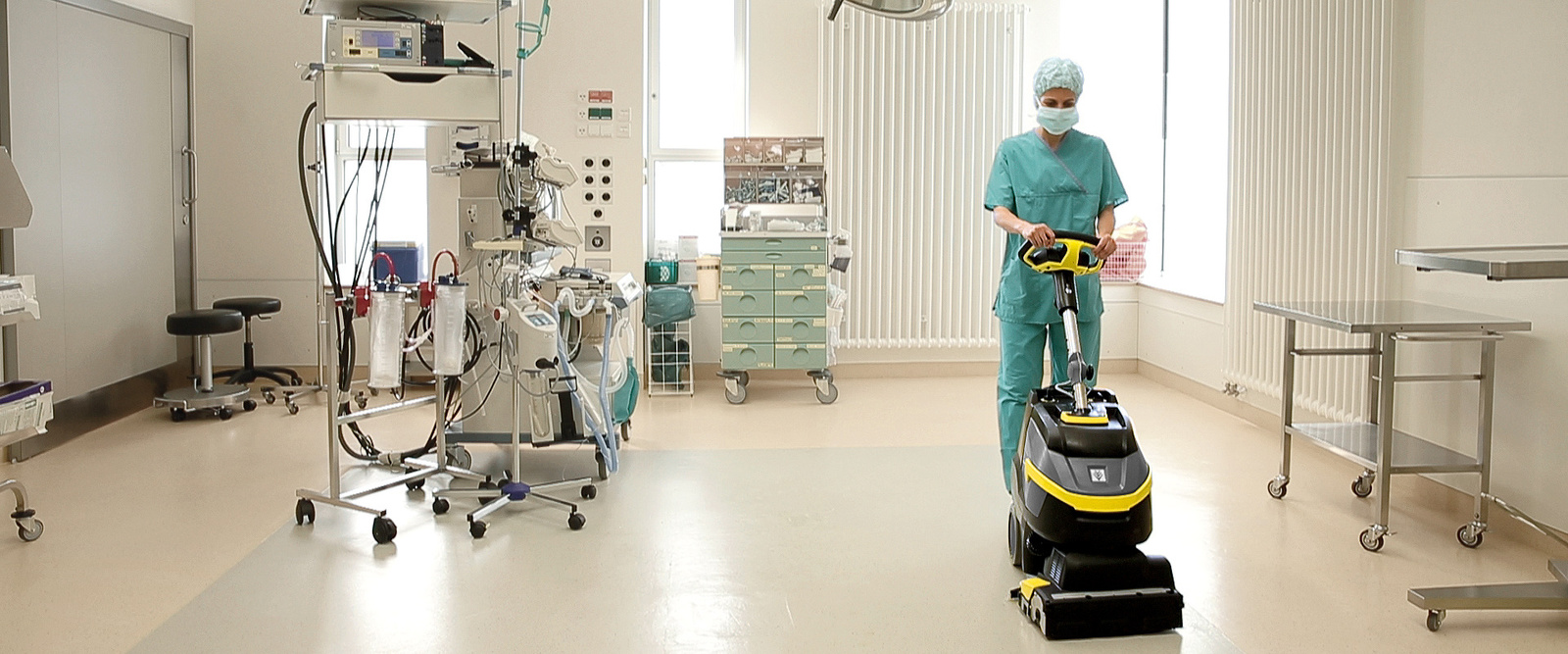
Cleaning outside areas and car parks
If outdoor car parks, access roads, ramps and footpaths are clean, this not only creates a positive first impression, but also significantly reduces the amount of dirt entering the building in the first place. There are suitable machines to make cleaning easier, whatever the weather.
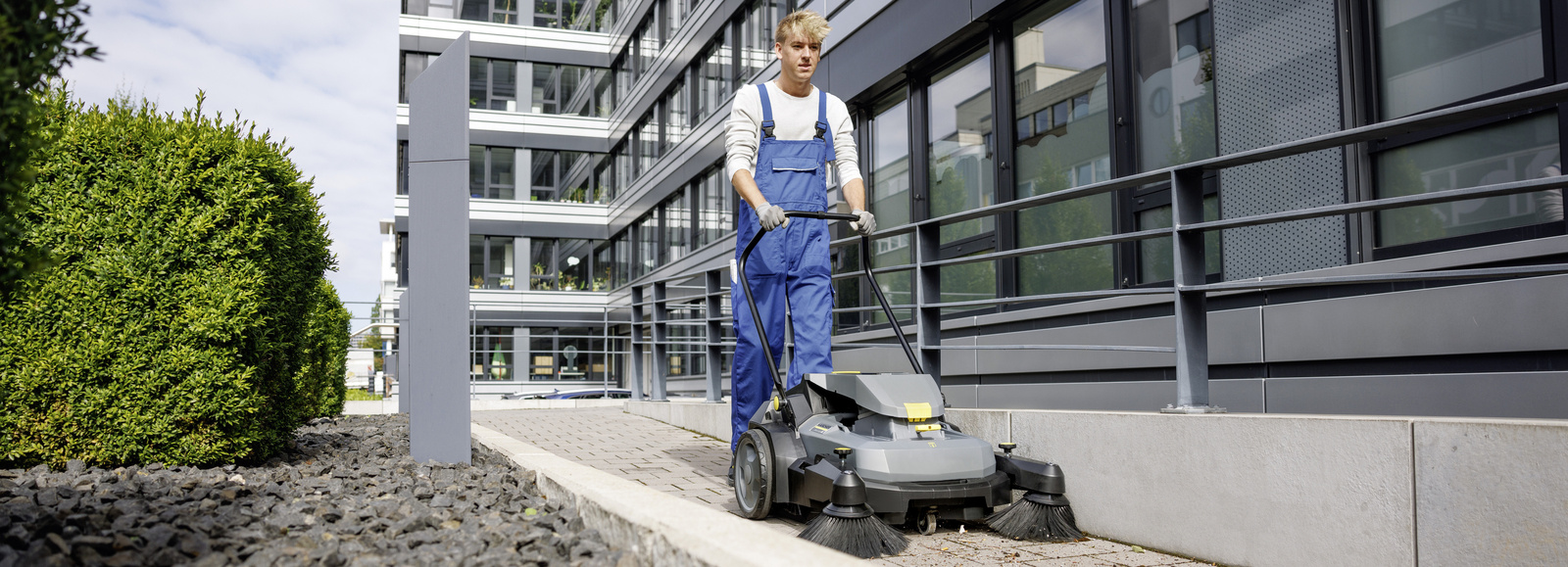
Keeping clean in any weather
A well-maintained outside area helps to give patients and visitors the welcome they deserve. Various technical aids are available to suit different weather conditions and make work as efficient as possible. When the weather is warm and dry, parking areas, access roads, ramps and even footpaths can be cleaned using vacuum sweepers. Push sweepers or ride-on models are ideal for picking up loose dirt from paths, multi-storey car parks, parking spaces or entrances.
Tip – Use sweepers:
Vacuum sweepers are beneficial in car parks. They prevent parked cars from being covered in dust, because any particles that are whipped up get vacuumed straight up by the sweeper.


Leaf blowers can be a useful tool to clear leaves, litter and coarse debris from the premises. Battery-powered models have the advantage of being quieter and therefore less disruptive to the surrounding area. They are also lighter and do not expose users to harmful exhaust fumes. The environment also benefits, since it does not release any carbon emissions.
Scrubber dryers are ideal for cleaning car park floors. They remove snow residue, rainwater, salt and ingrained dirt quickly and effectively. In the event of snowfall, the right method for clearing and gritting depends on the amount of snow and the site. In most cases, a snow shovel is sufficient for manual work. For larger quantities of snow, a small snow thrower can clear the site with ease.
Tip – Work need not be back-breaking:
Handheld machines with a carrying strap prevent workers from getting fatigued. Models with spring-loaded blowers are low-vibration and particularly user-friendly.
Cleaning car parks and outside areas
Whether dining in a restaurant, shopping in a supermarket, furniture store or shopping centre, or visiting a doctor's surgery or a museum – often the first thing guests do upon arrival is to park their car and make a short walk to the building. There are a number of cleaning methods that can be used to make a positive impression right from the start, to prevent the risk of accidents and to stop dirt being brought in from outside.
Winter services
Climate change and the transport revolution present winter service teams with immense challenges, including environmental impacts such as reduced snowfall, the sudden onset of winter weather or black ice. At the same time, cycle path networks are being massively expanded, as more and more road users switch to two wheels for the sake of the environment or to counter rising fuel costs. What methods are available for local authorities, municipal maintenance depots, external service providers and building service contractors to keep working ecologically, economically and ergonomically? Which implement carriers and implements are used for which jobs?
Green space maintenance
Mowing lawns, landscaping green spaces, keeping hedges and trees in check: the list of jobs for green space maintenance teams is a long one. Powerful cordless machines are now available on the market for many tasks, from brush cutters to pole-mounted pruners and hedge trimmers. There are also various types of mower designed for implement carriers, sustainable options for weed removal and safety vacuum cleaners to aid in the fight against the oak processionary moths.
Cleaning car parks
Whether hotel multi-storey car parks, underground car parks at airports and shopping centres or public car parks, guests, passengers and customers are given a first impression the moment they park their vehicle. Cleanliness plays an important role here, because a well-maintained space is not only visually appealing, but also gives people a sense of reassurance. A structured approach to cleaning is therefore very important, with efficient cleaning technology taking the strain off staff and ensuring good results.
Facade cleaning
With our new system solution comprising brushes, telescopic lances, attachments and adapters, a variety of cleaning methods can be used flexibly for different cleaning tasks. Whether with low, medium or high pressure, or even vacuuming, it's never been easier to clean facades, glass surfaces, solar panels and floors flexibly and thoroughly, even in hard-to-reach areas.
Entrances, waiting areas and corridors
Dust control mats in the entrance area can be cleaned of dust and dirt using vacuum cleaners with HEPA filters. Scrubber dryers make it much easier to clean the floors of the entrances and waiting areas as well as the expansive corridors. Scrubber dryer robots are another option to help take the pressure off cleaning staff.

Entrance area: keeping dirt, dust and germs at bay
A clean outside area not only looks good, it also minimises the amount of dirt that gets inside the building. This, in turn, notably reduces the workload of cleaning indoors. In the entrance area of the hospital, dust control mats help to ensure that even less dirt is trodden into the building. Dust and loose dirt can be removed from the mats through regular cleaning with a vacuum with HEPA filters. They ensure cleanliness and, thanks to the fine level of filtration, only very few pathogens are released into the environment. The reason: microorganisms stick to other particles then get filtered out of the ambient air together with dirt and dust.

Floor cleaning made easy with scrubber dryers and robots
The Robert Koch Institute recommends that floors in entrances, waiting areas and corridors should not be disinfected but instead thoroughly cleaned. For expansive areas, scrubber dryers with powerful suction provide helpful support in this regard. These machines can clean these large areas faster and, most importantly, more thoroughly than manual mopping.
Cleaning the reception area
The reception area is like a business card for every hotel, car dealership or museum. The place where guests enter an establishment should be somewhere they feel welcome and comfortable – better still, so comfortable that they want to return. But it's not just stylish furnishings and smiling staff that are crucial here; the reception area should also be immaculately clean to win over every visitor, since hygiene plays a key role in places where people are constantly coming and going. Here is an overview of helpful measures to ensure every reception area can show itself at its best.

To further free up staff and to make cleaning the long hospital corridors as efficient as possible, scrubber dryer robots are an efficient addition to the team. They can work large areas quickly and can also manoeuvre safely into tight spaces. Models that work autonomously have control of the docking stations, for instance, and they top up consumables and clean several thousand square metres of floorspace every day – without any human input. Creating the cleaning routes is easy and no programming knowledge is required. However, the robot has to reliably detect people, moving obstacles and stationary objects and even safely navigate its way through areas of high traffic. Ideally, its ability to do this should be confirmed by an external testing body. If cameras are in use, measures should be taken to ensure that the system does not save the data it has recorded.
Cleaning floor coverings
Whether carpeting in a hotel corridor, cement screed in a production hall or wooden flooring in a school building, there are countless floor coverings that are suitable for different loads and ensure safety through properties such as anti-slip design or studs. Cleaning floor coverings is important in some areas to ensure hygiene, while in other areas the focus is on appearance. In any case, well-maintained floor coverings have a longer service life and therefore need to be replaced less frequently. Through regular maintenance cleaning, even the need for labour-intensive deep cleans can be delayed.
Cleaning stairwells
Stairs can be real design elements, made from shot-peened steel or precious wood. They can be central escape routes or merely neglected pathways between the floors. In each case, cleaning jobs on a stairwell become a challenge because the spatial conditions make for hard work. Why is cleanliness still important? What must be kept in mind for various floor coverings? What are the most common operator errors? Here is an overview.
Robotics
People cannot be replaced in building cleaning services, as much of the work can only be done manually. However, due to the growing shortage of skilled labour in many countries, it is becoming increasingly important to reduce time-consuming activities and work efficiently. The use of robotics in building cleaning services is nothing new, but some models now work so autonomously that they represent a clear reduction in the workload for certain applications. Easy operation and high safety standards for working among the general public also mean they can be implemented for a wide range of application scenarios, from supermarkets and hospitals to airports.
Cleaning and disinfection in patient rooms
An especially reliable technique for cleaning surfaces in patient rooms is to use the pretreatment or spraying method. Using different-coloured cleaning cloths helps to prevent the spread of germs here. Especially critical areas have to be disinfected. Efficient and reliable procedures are also important when it comes to floor cleaning.

Surface cleaning (1): turning over a new leaf, stopping germs
For those in need of healing, a hospital room is a temporary home from home. A clean and hygienic room helps patients to feel comfortable and safe. Correct cleaning procedures must be followed to ensure no germs are passed from one patient room to the next. The pretreatment or spray methods are especially safe for cleaning surfaces by hand, since the cleaning cloths are not constantly being dipped in the same cleaning solution. This method is simpler for the cleaning staff too, since it saves them from dragging buckets of water around. The cloths used are folded two or three times and presoaked with the appropriate amount of detergent. Alternatively, a foam dispenser is also suitable for applying the cleaning solution to the pre-folded cleaning cloths there and then. The cleaning staff then cleans the first surface with a fresh side of the cloth before unfolding the cloth for each subsequent surface until all sides of the cloth have been used. It should then be discarded and replaced with a fresh cloth. It is also important that a fresh cloth is used for each room.
Tip – Effective floor cleaning:
Any carpeted floors in patient rooms can be cleaned using a dry vacuum cleaner with a HEPA 14 filter.
Surface cleaning (2): colour-coded system for clean toilet facilities and washrooms
A colour-coded system is an effective method for organising cleaning equipment. Different-coloured cleaning textiles are used to clean different areas. The signal colour of red is reserved for toilets, urinals and splash areas. Yellow cleaning textiles are used for all other areas of the facilities. To prevent streaks from forming when cleaning the mirrors, we recommend using suitable microfibre cloths together with a ready-to-use glass cleaner.
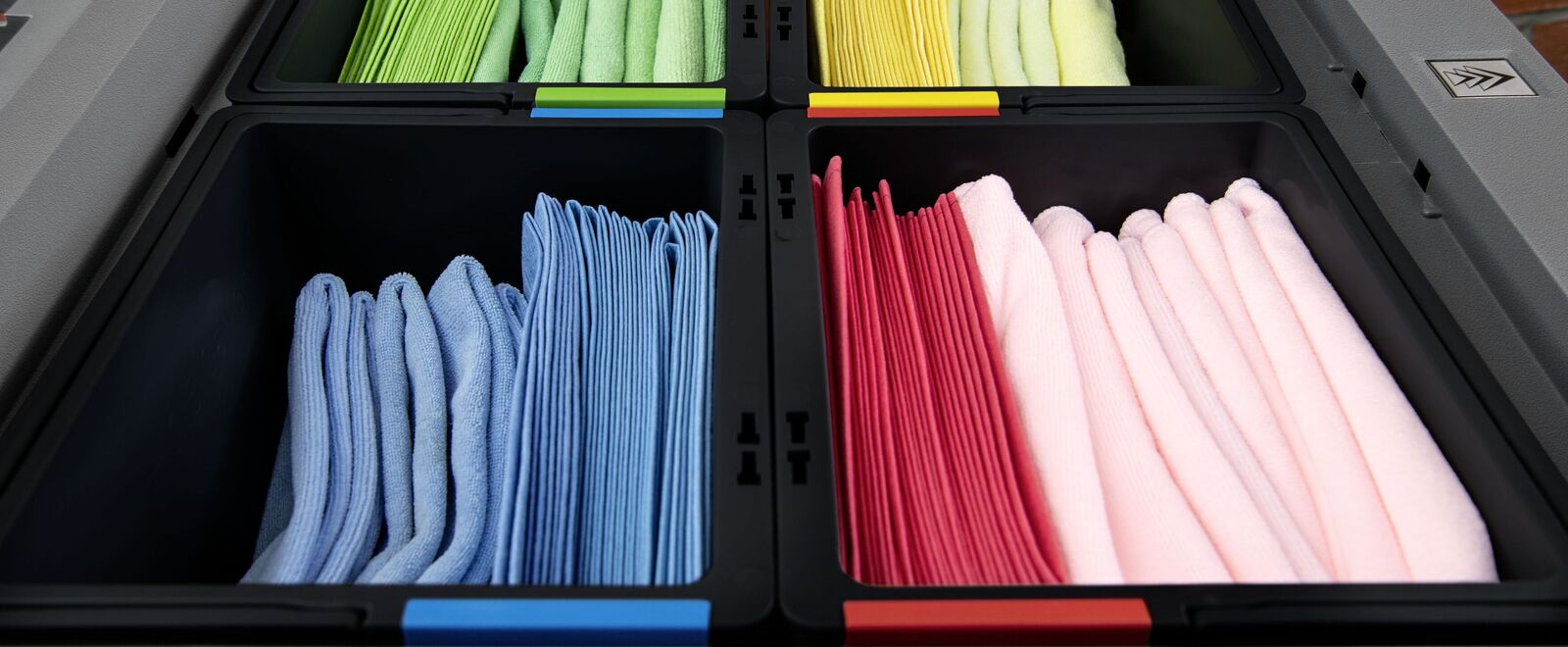
Tip 1 – Safety measures:
When handling microfibre cleaning textiles or detergents and disinfectants, it is essential to wear gloves and, if necessary, additional personal protective equipment.
Tip 2 – Certified steam cleaning methods:
In some countries, steam cleaning processes, which are certified by independent laboratories to combat bacteria and viruses, are also used to disinfect toilet facilities and washrooms, for example. In this instance, it is important to follow to the specified work steps.
Surface disinfection: where it matters most
In the patient room, only surfaces that pose a high risk of infection from frequent contact with hands and skin need to be disinfected. But which surfaces pose the greatest risk? A proper risk assessment must be carried out to ensure the right spots are disinfected. This is done in line with the relevant guidelines provided by organisations such as the Robert Koch Institute (RKI), the World Health Organisation (WHO) or the Centers for Disease Control and Prevention (CDC) and is then implemented based on the local assessment. As a general rule, when cleaning staff are cleaning and disinfecting, they must be provided with suitable personal protective equipment.
Cleaning floors: good bye germs, hello patient safety
To clean floors in patient rooms efficiently without creating a slip hazard, a distinction is made between loose dirt and ingrained dirt. Loose dirt can be wiped up very simply with single-use or reusable textiles that trap dust, whereas ingrained dirt needs to be removed using wet cleaning methods. The pretreating method is also a reliable strategy for cleaning floors, since it removes the need to repeatedly immerse and wring out a used mop in the cleaning water. Of course, a fresh microfibre mop cover must be used for each patient room to prevent microorganisms from entering the next room.
Tip 1 – Hand hygiene:
Hand hygiene is key to preventing the spread of germs on surfaces. It is therefore important that soap and sanitiser dispensers are sufficiently available and regularly topped up.
Tip 2 – Deep cleaning and intensive cleaning:
Scrubber dryers and single-disc machines are used for deep or intensive cleaning of floors.
Cleaning and disinfecting hospital kitchens
There are various challenges to overcome in the hospital kitchen. Textured floor surfaces can be easily cleaned of dirt using scrubber dryers, surface cleaners and the appropriate auxiliary equipment. Caution is necessary when disinfecting, as there are common pitfalls here.
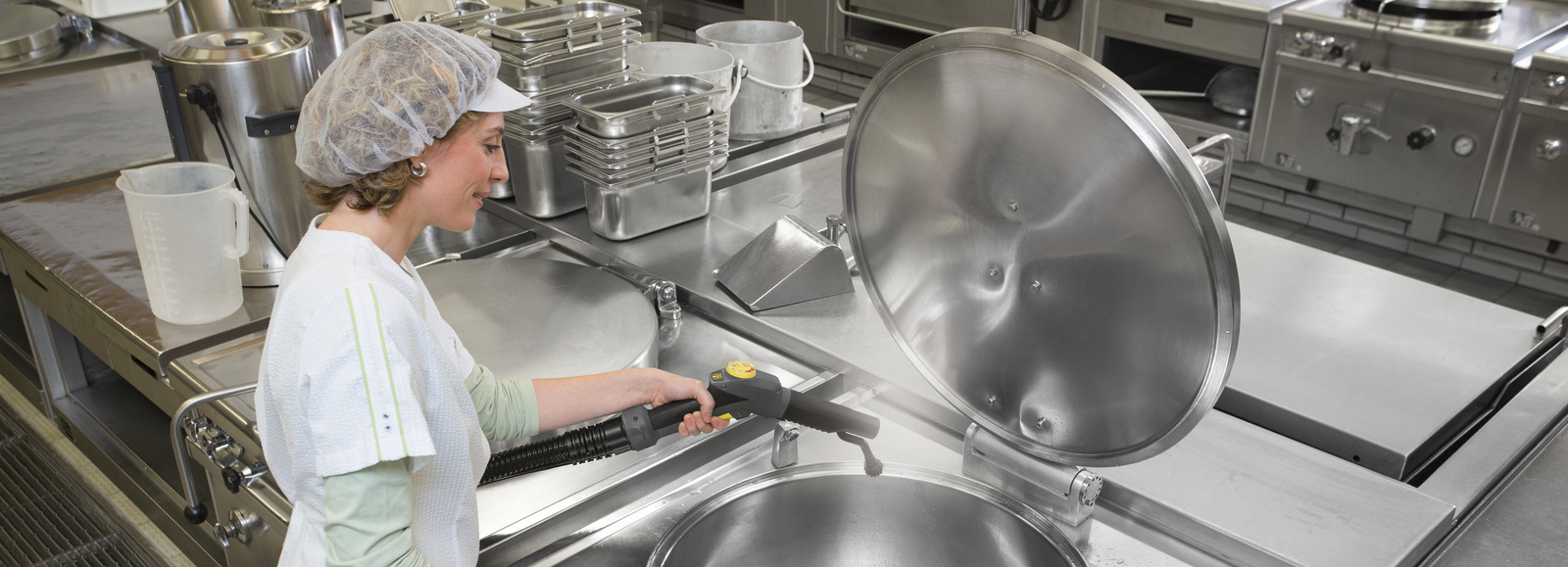
Wall tiles: keeping germs out of the kitchen
As soon as food is involved, hygiene has to take top priority, especially in a setting as sensitive as a hospital kitchen. To clean wall tiles, for example, high-pressure cleaners used in combination with foam jets or cup foam lances are an effective option. To reliably eliminate the breeding grounds of microorganisms, it is advisable to alternate between acidic and alkaline detergents. Extra care is required, however, when dealing with joints containing cement: these are sensitive to acid and should therefore be rinsed beforehand so that they are sufficiently saturated to prevent damage from the acid. Stubborn dirt can be efficiently loosened from nooks and crannies with a steam cleaner.

Textured floor surfaces: free from grease and food residues
The floors in hospital kitchens are often covered in textured floor tiles with studs. Although this ensures slip resistance, it does present a disadvantage when it comes to cleaning: the recesses between the studs on the tiles create an easy resting place for contaminants such as grease or food remnants. To ensure the floor is still cleaned quickly and efficiently, surface cleaners with a rotating nozzle bar and slightly offset power nozzles are recommended. These apply water to the floor at high pressure and loosen the dirt very efficiently. Orbital machines or scrubber dryers with rollers are an effective alternative too. Both are easy to manoeuvre, and a scrubber dryer also picks the dirty water straight back up. Best of all, the rollers are practically self-cleaning, since the dirt cannot stick to the rollers at such a high rotation speed.
Disinfection: avoid the pitfalls
Food contact surfaces should generally be disinfected only when they have been cleaned beforehand or are free of dirt. There is a specific reason for this: if there is protein-based dirt on the surface, the disinfectant concentrates solely on the protein and not on the viruses, bacteria and other microorganisms. This is known as a protein error and impairs the performance of the disinfectant.
Another common pitfall when handling disinfectants is what's known as the soap error. This is when cationic surfactant-based disinfectants come into contact with surfaces that still have residues of anionic surfactant-based detergents, potentially causing a chemical reaction in which the cationic surfactants of the disinfectant combine with those of the detergent. This, in turn, causes a water-insoluble giant molecule to form, which cancels out the effect of the disinfectant. If surfaces that have previously been cleaned with an anionic surfactant-based detergent are subsequently to be disinfected, they must first be rinsed thoroughly to remove detergent residues. If the surface is very tacky due to a soap error, a detergent with higher solvent content may help.
Tip – Rinse with drinking water:
Once the surfaces have been cleaned and the disinfectant contact time has elapsed, they must be rinsed with sufficient clean water to remove any residual disinfectant or detergent. Otherwise, food could come into contact with the residues.
Cleaning kitchens
Wherever food is cooked, there will be stubborn stains. Grease and food residues must be systematically removed in accordance with the HACCP guidelines in order to eliminate breeding grounds for microorganisms. What can high-pressure cleaners, surface cleaners, steam cleaners, scrubbers or scrubber dryers do? What specifics need to be considered when using them? And what should disinfection look like? Here is an overview.
Disinfection in the operating theatre
In large operating theatres, scrubber dryers can be used to disinfect floor surfaces, while mop covers with disinfectant are used in confined spaces. Surface disinfection in the operating theatre is far from straightforward and needs to be completed in the shortest time possible.
Reliable floor disinfection with scrubber dryers
Cleanliness, hygiene and clinical purity are more vital in operating theatres than in virtually any other setting. In addition to mechanical cleaning, the floor surfaces in the corridors of large operating theatre areas must also be disinfected. If a scrubber dryer is used for this purpose, the machine itself must also be in perfect hygienic condition. The disinfectant must be dosed according to the manufacturer's instructions and added to the tank. Important: It can only be kept for one working day and must then be disposed of. The tank must be cleaned and then refilled the next day. However, space in the operating theatre is usually limited, which is why mop covers and disinfectants are usually better suited for floor disinfection.
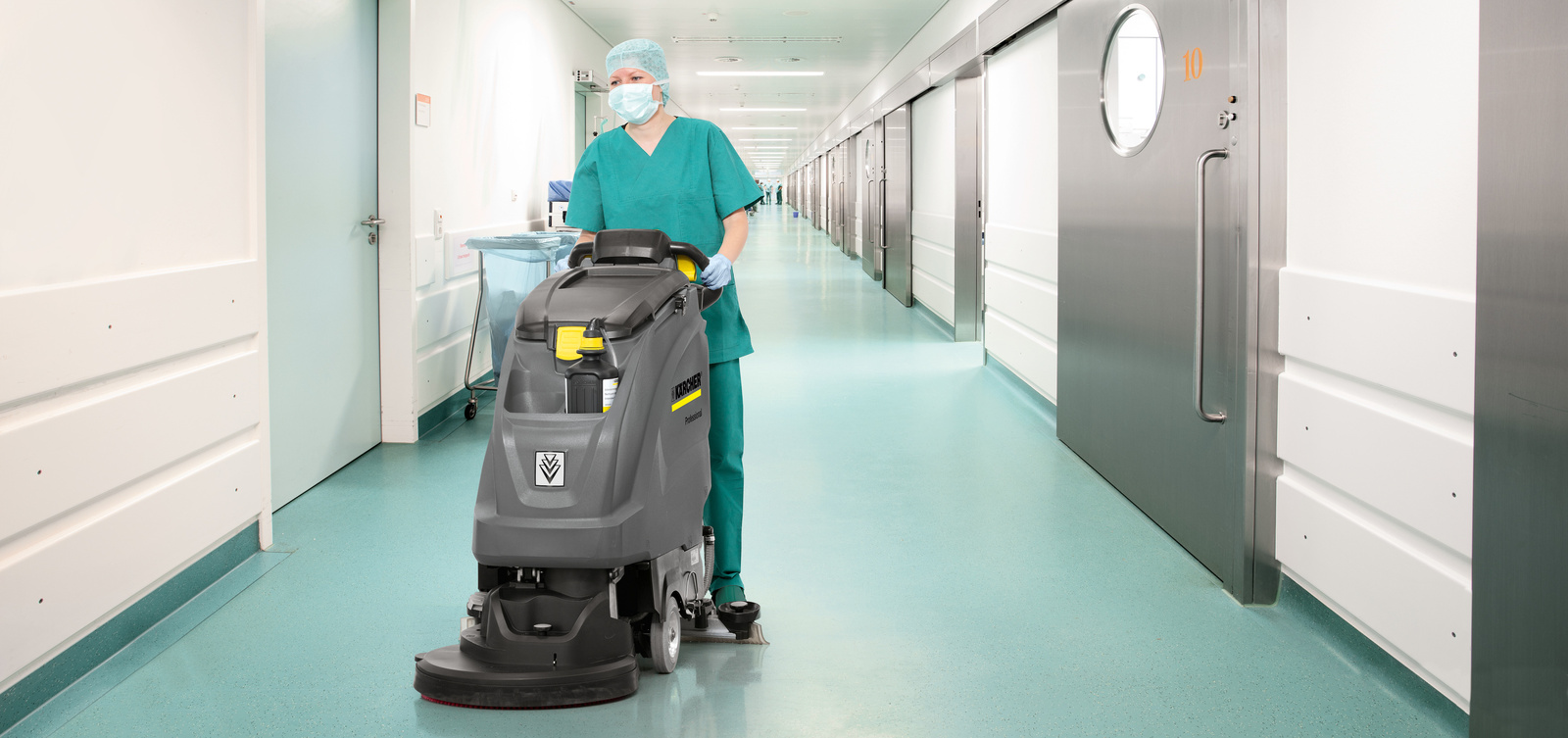
Cleaning machine maintenance
Vacuum sweepers and scrubber dryers are at work day in day out keeping supermarkets, industrial plants, warehouses and hotels clean. They pick up vast amounts of dirt to improve appearances, establish hygiene, preserve value and prevent injury by maintaining floors' anti-slip properties. However, to maintain the usual high cleaning performance and maximise service life, it is not enough to simply empty the waste container after the work is done. How to care for and maintain cleaning machines – a guide.
Surface disinfection: tight time frames, varied tasks
Cleaning in the operating theatre can rarely be implemented according to a schedule; delays are often caused by lengthy operations or emergencies. For this reason, cleaning teams need to be available on a flexible basis – on call to ensure hygiene as quickly as possible between procedures. In most cases, there are usually only a few minutes available to clean and disinfect the facilities. Firstly, blood and other deposits must be cleared before everything is then disinfected. It's all in the detail: from walls and preparation surfaces right through to operating theatre lights and even the wheels of the stools. All surfaces are wetted with disinfectant. Intensive deep cleans are performed when the operating theatre is temporarily closed or a suitable time frame is available.
Tip – Do not rinse or wipe off:
The disinfectant dries out by itself. Rinsing and wiping pose risks, because these actions can impair the effect of the disinfectant.
From the visitors' toilet to the office
When it comes to cleaning toilet facilities and washrooms in hospitals, the key is to clean regularly, thoroughly and to prevent the spread of germs. In offices and administrative areas, cleanliness and hygiene form the basis for a healthy and pleasant working environment.
In focus: clean visitor toilets
Cleanliness is a top priority in toilet facilities and washrooms – especially in hospitals. As a minimum, therefore, toilets should be cleaned once a day either before or after visiting hours and as necessary in between. Besides the toilets themselves, the baby changing table is a particularly sensitive area that needs to be cleaned and disinfected daily. Mirrors and sinks should be thoroughly cleaned at least once a day. The colour-coding method is recommended to avoid the risk of germ transmission.
Tip 1 – Leave no stone unturned:
Even toilet brushes should be checked as part of the toilet cleaning measures.
Tip 2 – Short journeys:
Cleaning trolleys and cleaning equipment should be located as close as possible to the place of use, so that staff can access them quickly – although preferably somewhere inaccessible to patients and visitors.
Tip 3 – Inspection rounds and consumables:
Regular inspections are required throughout the day to ensure that the toilets are kept clean. Consumables such as soap, disinfectant, hand towels and toilet paper should be replenished as required and waste bins emptied regularly.
Cleaning toilet facilities and washrooms
There are many reasons why careful cleaning is required in toilet facilities and washrooms: depending on the setting, toilets, showers and changing rooms in office buildings, production facilities, hotels, restaurants, sports halls or shopping centres are used by many people. This inevitably leads to people's skin coming into contact with various different surfaces that have been touched by practically all users of the facilities – including door handles, taps or toilet flush buttons. Consequently, microorganisms can pass from one person to the next. This must be prevented by means of defined cleaning sequences.

Cleanliness behind the scenes: offices and other administration rooms
Cleanliness and hygiene are also important in offices and other administration rooms so that employees feel comfortable and safe while at work. As such, floor surfaces should be regularly cleaned of loose dirt using a dry vacuum cleaner or dust mop. Where necessary, ingrained dirt is to be wet cleaned with a microfibre mop or a compact scrubber dryer, depending on the size of the office rooms. For surfaces such as desks, file trays, shelves etc., cleaning with the pretreated cloth or spray method is easy and efficient.
Disinfection in the office for health and well-being
It is also important to keep germs under control in the office and administration areas to protect the health of employees and prevent the transmission of illness. In addition to general hygiene measures such as regular hand washing and the use of hand sanitiser, it is important that a targeted disinfection approach is applied to surfaces that come into regular contact with skin/hands. These include door handles, light switches, telephones, computer mice and keyboards. If workstations are used by multiple colleagues, it makes sense to clean and disinfect them at shift changes so that the next employee has a tidy workplace.
Cleaning offices
Office cleaning takes place in a challenging environment where multiple different priorities come into conflict: time and cost factors, cleaning results, hygiene and sustainability are all interconnected and must be taken into account. As such, it is important to choose the right cleaning methods for the challenge in question. Particularly with a view to ensuring hygiene and sustainability, static cleaning will increasingly be replaced by dynamic cleaning in the future.
Suitable products for your area of application
Find a wide range of technology at lightning speed – with the Kärcher Professional product finder
In no time at all, we'll show you the exact Kärcher Professional machine that best suits your specific cleaning task.

